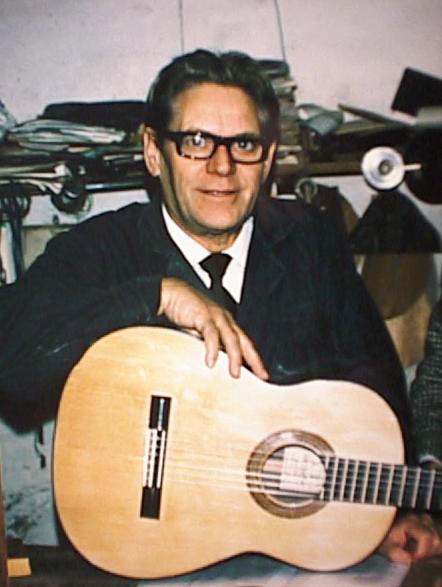|
a_arnold -> RE: Before nylon (Sep. 13 2007 23:51:22)
|
There is a great account of the origin of nylon guitar strings in John Huber's book, "the development of the modern guitar"
Here's a synopsis:
Segovia had a Manuel Ramirez from 1912 to 1937, then switched to Hauser, whose guitar (with Segovia's help) was modeled on Ramirez and Torres designs. Both were gut-strung.
Then WW2 came along, and Segovia's German source of gut (guy named Pirastro) dried up. He says he went to Albert Augustine (At that time an employee of the Spanish Guitar Centre in NY (where I got my first guitar!) and Dupont came to the rescue (unclear whether it was after a request by Augustine or by Segovia). They supplied monofilament that they were making anyway for fishing line, tennis racquets, etc. Augustine hired E.O. Mari and D'Addario and worked with Dupont and Segovia until they had something Segovia could use.
Segovia credits Augustine with developing nylon strings, but Rifat Eisenbel (Concertiste in France) claims he made the first set in Turkey in 1938.
E.O. Mari struck out on his own during the war and began exporting to Venezuela, and Dupont focused on parachute production, and almost lost interest in strings, but after the war they realized that gut string manufacturers were suddenly making a bundle, so they jumped back into the market.
At this point, however, the guitar string market was still too small to justify much experimentation, so they kept on using the same materials that they used for fishing line, tennis nets/racquets, etc.
By the 50's, thanks to the endorsement by Segovia, nylon strings were established and accepted as equivalent to gut, but not perfected.
Here's where it gets interesting.
Nylon is strung at higher tensions.
This had cascading effects on guitar design.
Higher tension nylon tended to make the older (pre and early post-WW2 guitars) sound dead because the instruments weren't designed for the tension. The effect wasn't noticed at first. New players had nothing else to compare to, and the older players liked the durability and stability of the nylon.
So when everybody began restringing with nylon their guitars didn't sound so great after a while. Sometimes there was actual structural failure, but more often, the guitars just started to sound dead after a while, and a mythology got started that guitars have a finite life span -- that they are too fragile to remain healthy for the lifetime of the performer -- when in fact, it was the transition to nylon that made them sound dead. Players began describing their guitars as "played out".
At that point (late 50's) Segovia went back to Ramirez and worked with him to design a bigger, sturdier guitar that would stand the higher tension. He was enormously pleased with the result and retired his Hauser, which by then didn't sound so good. Still doesn't, according to Huber, who played it, but it was strung with nylon.
The higher tension brought more volume and projection. Segovia was at his height as a performer, and by that time had moved the guitar from the parlor and small hall venue into the large concert hall where he needed the projection. So he was really happy with the new Ramirez guitar design and power. (He also had BIG powerful hands and needed a bigger fingerboard).
That started a trend toward more and more volume, and builders began experimenting with that as their goal. Which led to longer string lengths, shifting from 65 to about 66.5 cm., which increased the tension on the bridge by another 10%. Guitar designs changed still more in response. Still based on Torres, but tweaked for nylon.
The story then shifts to the use of cedar in the Madrid school, led by Ramirez, which tended in the 60's to build with flat, often cedar tops, while spruce was generally preferred in Granada, which Huber theorizes may be easier to deform into the arch that gives more "punch" and structural integrity to a top). He seems to suggest that cedar has more inherent stiffness as a wood, but is too stiff to deform easily (although Dieter Hopf achieves pretty precise control of arching in his cedar tops), while spruce is more easily deformed into an arch, so can gain strength and stiffness from the arch geometry, so it can be thinner, lighter.
In both cases, arch or cedar, the search for strength and stiffness and greater volume ultimately was the result of the shift to nylon. . .
I'd be interested in hearing some luthiers' comments on Huber's ideas. He's not a luthier, I don't think.
Tony Arnold
|
|
|
|

